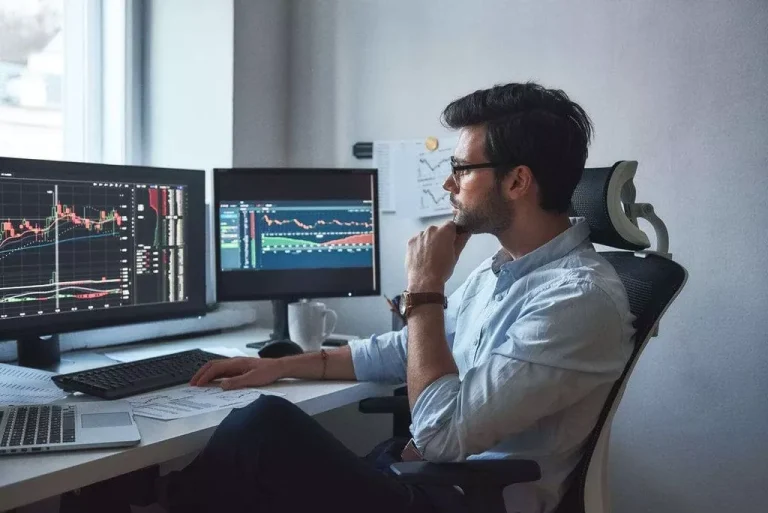Content
It can be measured on any type of security traded https://www.xcritical.com/ during a trading day. Finally, significant changes in volume often indicate to stock traders price levels that represent support or resistance for a stock. It usually indicates that the consensus opinion of market analysts is that the stock shows little probability for significant price appreciation.
Daily Trading Volume by Currency
The first trader buys 500 shares of stock ABC and sells what does high volume mean in stocks 250 shares of XYZ. The other trader sells those 500 shares and buys the 250 shares of stock XYZ to the first trader. The total volume of trade in the market is 750 (500 shares of ABC + 250 XYZ shares). This is because we do not double-count the volume—when trader 1 buys 500 ABC shares from trader 2, only 500 shares are counted. Likewise, only 250 shares of XYZ would be recorded on the volume tally. Volume of trade is the total quantity of shares or contracts traded for a specified security.
Our Best Ideas to increase YOUR returns.

Candle (2) could be a correction, but large trading volumes remain at their high. Volumes begin to decline on a candlestick (3), indicating the end of the uptrend. Constant function market maker The price again turns into a flat with small fluctuations within the range. Approaches to calculating trading volumes differ due to the specifics of collecting statistical information in different markets.
Definition of Average Daily Trading Volume
The USD/HKD experienced the steepest decline, with its share falling by 0.9 percentage points from April 2019. Issuer – For an issuer, low trading volume is undesirable as it may prevent institutional ownership. If trading volume is not very high, the security will tend to be less expensive, since people are not as willing to buy it. Additionally, low volume stocks carry with them a “liquidity premium,” which means that less-liquid stocks should be lower priced. This is because to buy an illiquid stock, investors will demand a higher return to compensate for the risk that they may not be able to easily sell the low-volume stock at a later date. The coronavirus pandemic initiated severe market volatility, beginning in the last week of February.
This only makes sense considering the pair represents the two biggest economies on a global scale, the European Union and the United States. The ten leading currencies featured in the chart above boast a combined daily trading volume of $5.52 trillion as of April 2022. This makes for an 18% increase from the same month three years earlier when the top 10 pairs attracted trading activities valued at $4.7 trillion in total. The euro pitted against the sterling is the tenth most traded pair whose 2% share remains unchanged from 2019. All data considered, only three of the ten leading pairs exhibited decreases in daily volume share.
Similarly, when a security is traded less actively, its trade volume is said to be low. Trading volume is a critical indicator of market activity that is closely monitored by traders and investors alike. Understanding trading volume can provide valuable insights into market trends, investor sentiment, and potential trading opportunities. In this article, we will explore what trading volume is and how traders can use it to inform their trading decisions.
Trade volume is also an important factor for traders when they are making trading decisions. They track a security’s average trading volume on a daily basis over a short term or even a longer-term period for the same. Usually, trading volumes tend to increase towards the beginning and end of a trading day.
- Understanding ADTV is crucial for both novice and experienced traders.
- The EUR/USD ranks as the most traded currency in the US for October 2023 when it recorded $215.3 billion in total turnover, with spot transactions making up 44% of this amount.
- This situation occurs when trading low-liquid assets or when a pause is taken before the weekend or news release.
- For example, ten market participants buy and sell 100 stocks each day.
- Derivatives like options and currency swaps accounted for $60 billion of the total daily turnover, representing a 7% share of the local forex market compared to 93% for non-derivatives.
- Trading volumes are the number of stocks traded or the number of trades in a fixed period.
The trade execution was based on the volume crossover on the ADTV as well as the fact that the trading amount of approximately $3.2 million was within the trading limits of the fund. This is because at Point 3, 28.59 million shares were traded, at an approximate value of $2.62 billion. Risk was also managed by using the trading limit along with the ADTV crossover, allowing the stock trader to easily exit the position.

We pulled data from authoritative sources to deliver accurate and comprehensive statistical information to readers interested in gaining deeper insights into the global forex trading landscape. Forex is the most liquid and heavily traded market on the planet, outstripping all other markets with an average trading volume of $7.51 trillion per day. Several factors contribute to this unrivaled turnover, starting with the fact the forex market is open 24 hours a day, 5 days a week. This figure provides traders with a snapshot of the security’s typical daily trading activity. When a price change coincides with an increase in volumes, this indicates the activity of traders and the continuation of the trend.
Even a modest trade might be enough to move the pricing needle in this case. Think of volume as a thermometer, gauging the temperature of investor interest in a particular stock. High trading volume indicates significant investor interest and liquidity, meaning you can buy or sell shares with minimal price impact.
Options are the fourth most traded instrument on the global forex market as of 2022. They attracted $304.3 billion in total daily turnover for a 2.1% increase from 2019 and a 4% share of the global trading volume. Currency swaps consistently rank as the least traded forex instrument with a 2% market share and around $124 billion in daily average volume in 2022.
The VWAP (Volume Weighted Average Price) indicator is the weighted average price of an asset for a certain period, weighted by total trading volume. It is used to determine the general trend direction of an asset and identify support and resistance levels. It is calculated by multiplying the price of each trade by its volume, then summing these products and dividing the resulting amount by the total trading volume for the period. In the Forex market, it is more difficult to calculate trading volumes since real data is unavailable here. The global Forex market is divided between the over-the-counter and futures currency exchanges, where derivatives (futures, options) are traded rather than currencies. Information on the number of transactions provided by individual currency exchanges is up-to-date.
In the context of one asset, this means that at the moment, the number of orders for the purchase/sale and the number of buyers and sellers is less than the average value. Possible reasons are upcoming news and data releases or the end of the working week. In the context of several assets, an asset with a smaller volume is less interesting to investors and therefore has less liquidity. A sharp increase in volumes (abnormally high green histogram bar) confirms the strength of the downtrend. Then the indicator draws smaller bars in red, which indicates a decrease in trading volumes.
The products and services available to you at FOREX.com will depend on your location and on which of its regulated entities holds your account. To get started, try them on a demo account, set them up in the strategy tester, and combine them with signals from other indicators. The red line is the indicator line, and the blue line is the price line. The breakout of the indicator line by the price from top to bottom indicates a downtrend.
